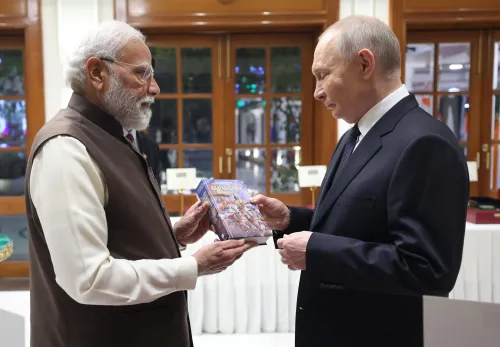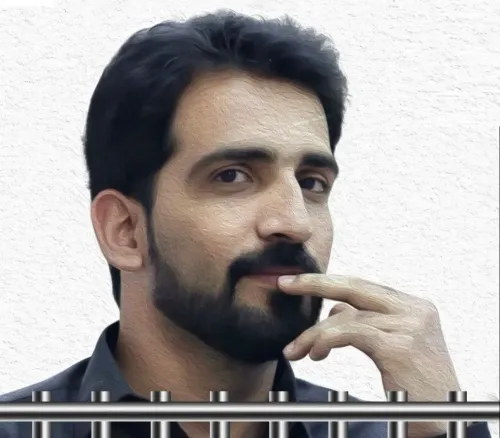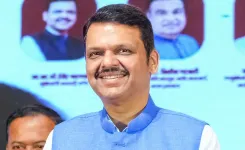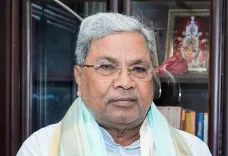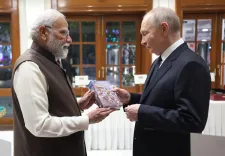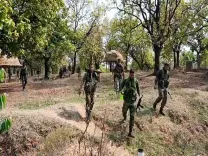What Are the Cultural and Spiritual Ties Between India and Russia During J&K LG's Meeting with Kalmykia Head?
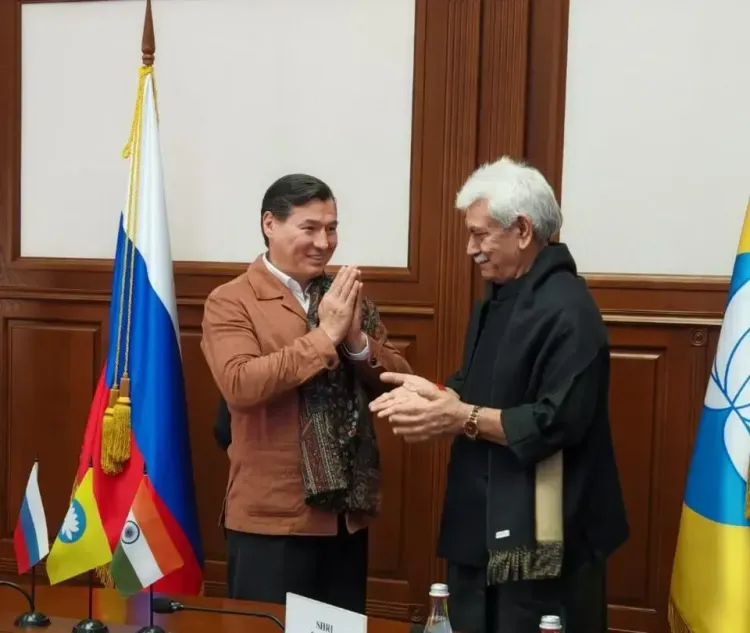
Synopsis
Key Takeaways
- Strengthened cultural ties between India and Russia.
- Significant Buddhist heritage in Kashmir.
- Respectful engagements with local communities.
- Importance of spiritual connections in international relations.
- Revitalization of ancient traditions through modern diplomacy.
Moscow, Oct 18 (NationPress) The Lieutenant Governor of Jammu and Kashmir (J&K), Manoj Sinha, engaged in a significant meeting with Batu Sergeyevich Khasikov, the Head of the Republic of Kalmykia in Russia, during his visit to the nation aimed at retrieving the sacred relics of Lord Buddha following a weeklong exhibition.
"It was a privilege to meet His Excellency Mr. Batu Sergeyevich Khasikov, Head of the Republic of Kalmykia. Our dialogue was fruitful and emphasized the robust cultural and spiritual ties that bind India and Russia," stated Sinha's office on X post-meeting.
Earlier that day, the LG paid his respects at the Geden Sheddup Choikorling monastery, a renowned Buddhist site in Elista.
"I offered my respects to the revered relics of Lord Buddha brought from India and enshrined in the main Buddhist monastery in Elista, known as the Geden Sheddup Choikorling Monastery. May Lord Buddha bless us and fortify the spiritual connections between our peoples," he remarked.
Sinha is heading the Indian delegation on a weeklong journey to Kalmykia.
He expressed his appreciation for the opportunity, thanking Prime Minister Narendra Modi for entrusting him with this revered duty.
Upon arriving in Elista, the capital of Kalmykia, LG Sinha conveyed his eagerness to honor the holy relics and engage with Batu Sergeyevich Khasikov, the Head of Kalmykia, the Head of Buddhists of Kalmykia, as well as venerable monks and local devotees.
Kashmir is historically rich in Buddhist sites, including the Harwan site, where the fourth Buddhist conference took place.
Several significant sites in Kashmir include ancient ruins like Harwan and Ushkur, which served as educational centers for the spread of Buddhism, along with historic monasteries such as the Alchi Monastery and the Shankaracharya Temple, both linked to Buddhism.
Other notable locations include the Ambaran Buddhist ruins near Akhnoor and the ancient Parihaspur Monastery.
The ancient site of Harwan in Srinagar was once the meeting place for the Fourth Buddhist council, housing a monastery during the Kushan era.
Ushkur is an ancient Buddhist site near Baramulla, noted for its vihara and excavated terracotta Buddha heads from the 7th-8th century CE.
Ambaran, another archaeological site close to Akhnoor, features a monastic complex that showcases a millennium of Buddhist cultural evolution from the 2nd century BCE to the 7th century CE.
Parihaspur, located on the outskirts of Srinagar, is an ancient site with a large monastery established by King Lalitaditya, famous for a colossal image of Buddha.
The Alchi Monastery, situated along the Indus River, is renowned for its ancient murals and sculptures that reflect a blend of Buddhist and Hindu influences, making it one of the oldest and most beautiful complexes in the region.
The Jayendra Vihara is a notable ancient monastery and center of learning near Baramulla, once frequented by scholars like Hiuen Tsang in the 7th century CE.


